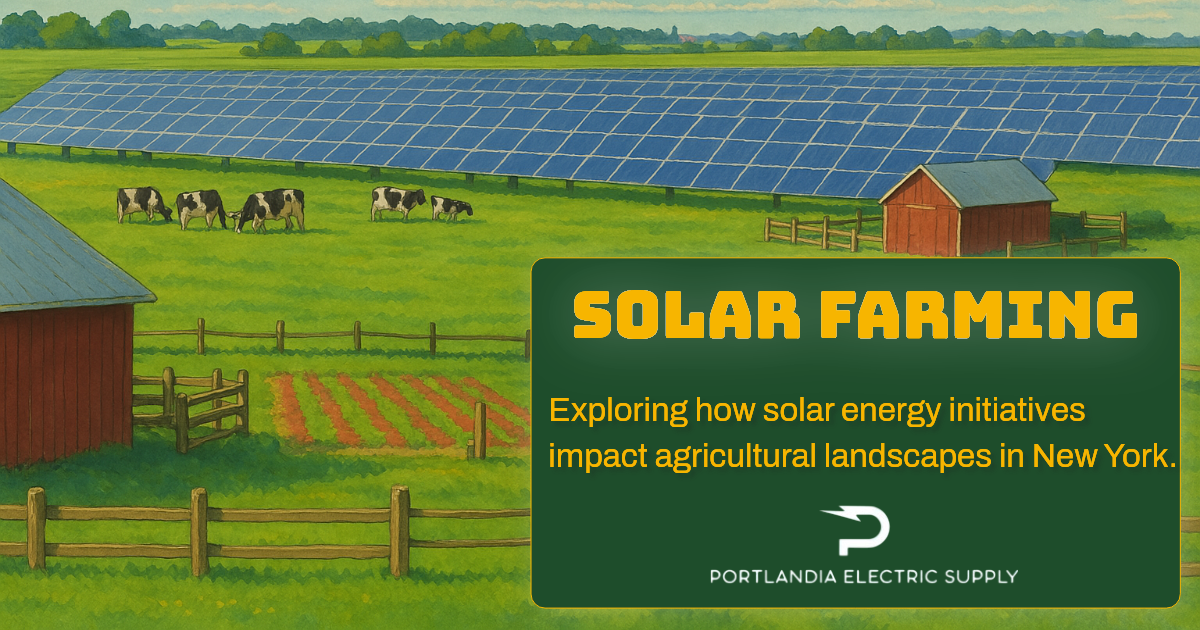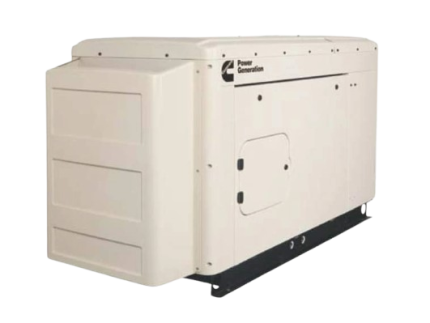From Conflict to Coexistence: The Future of Renewable Energy Farming in New York

As New York stands on the cusp of a renewable energy revolution, renewable energy farming is increasingly intertwined with agricultural development. Solar farms are no longer seen as a competing force against farmland but rather as a complementary asset, ushering in a new era of sustainability and economic growth. This shift is driven by agrivoltaics, an innovative approach that allows solar panels to coexist with crops and livestock, mitigating land use conflicts and maximizing productivity. By embracing this dual-use model, New York’s farming communities are setting a precedent for sustainable energy solutions that balance environmental and economic prosperity.
Join us as we explore how agrivoltaics is redefining the future of renewable energy farming, turning potential conflicts into collaborative opportunities and shaping policies for long-term sustainability.
The Future of Renewable Energy Farming
The intersection of agriculture and solar energy is reshaping New York’s rural landscape. As the state advances its commitment to renewable energy, integrating solar power with farming practices offers a viable path forward. This section examines the myths surrounding land use conflicts and highlights sustainable agricultural practices that align with the clean energy transition.
Solar Energy and Agriculture in New York
New York’s agricultural sector is undergoing a profound transformation as solar energy gains prominence. Research indicates that upstate New York’s solar farms provide not just an alternative energy source but also new economic opportunities for farmers.
The synergy between solar panels and agriculture enables farmers to diversify their income while contributing to the state’s ambitious renewable energy goals. However, achieving this balance requires strategic land management and informed policy decisions.
Land Use Conflict: Myths and Realities
One of the most significant challenges in expanding solar energy is the perceived conflict with agricultural land use. Many concerns stem from misconceptions rather than empirical data. Below, we dispel some common myths:
| Myth | Reality |
|---|---|
| Solar farms make land unusable for agriculture | Agrivoltaics enables crops and livestock to coexist with solar panels. |
| Solar panels drastically reduce available farmland | Strategic placement minimizes land use impact. |
| Solar energy development depletes soil quality | Research shows solar installations can improve soil health. |
Cornell University studies confirm that agrivoltaics offers multiple benefits, reinforcing the notion that solar energy and farming can thrive together rather than compete.
Sustainable Agriculture Practices and Renewable Energy Farming
Integrating solar energy into farming operations unlocks new avenues for sustainable agricultural practices. These innovative approaches not only support clean energy initiatives but also enhance farm resilience and productivity.
- Crop diversification: Solar panels create microclimates that support shade-tolerant crops.
- Water conservation: Panels reduce evaporation, improving water efficiency.
- Soil health enhancement: Managed grazing and cover crops can improve biodiversity and soil quality.
By leveraging these benefits, farmers can make the most of their land while playing a vital role in renewable energy farming.
Economic and Environmental Benefits for Farmers
Adopting solar energy in agricultural settings provides substantial economic and environmental advantages. This section delves into financial incentives, productivity enhancements, and dual land use strategies that benefit farmers.
Economic Incentives and Financial Gains
Renewable energy farming presents significant economic opportunities for farmers in New York. Beyond reducing energy costs, it creates new revenue streams through power sales and tax incentives.
- Lower energy costs: On-site solar generation cuts electricity expenses.
- Power sales: Excess energy can be sold to the grid.
- Tax incentives: Federal and state credits make solar installations financially viable.
Long-term power purchase agreements (PPAs) offer financial stability, ensuring that farms remain profitable while embracing renewable energy.
Solar Farms and Land Productivity
Strategically implemented solar farms can enhance land productivity rather than diminish it. Agrivoltaics supports agricultural resilience by protecting crops from extreme weather, reducing water evaporation, and creating optimal growing conditions for specific plants.
For example, shade-tolerant crops like lettuce and broccoli have shown improved yields under solar panels. Likewise, sheep grazing within solar farms provides natural vegetation control, reducing maintenance costs and improving land efficiency.
Agrivoltaics: A Dual-Use Strategy for the Future of Renewable Energy Farming
Agrivoltaics is revolutionizing the way farmland is utilized, ensuring that both food production and clean energy generation can coexist. This dual-use strategy maximizes land potential and contributes to the future of renewable energy farming.
Advantages of Agrivoltaics
- Optimized land use: Combines food production with energy generation.
- Improved agricultural outcomes: Partial shading can benefit certain crops.
- Enhanced solar panel efficiency: Cooler environments under crops improve panel performance.
Studies suggest that agrivoltaic systems can increase overall land productivity by up to 70%, demonstrating their potential as a long-term solution for renewable energy farming.
Addressing Land Use Conflicts and Policy Development
As New York progresses toward a clean energy future, proactive policies and community engagement will be essential to balancing solar expansion with agricultural needs.
Balancing Solar and Farming Interests
Effective land management is key to harmonizing renewable energy farming growth with traditional farming practices. Strategies include:
- Strategic site selection: Prioritizing underutilized or marginal farmland.
- Flexible design: Implementing solar arrays that accommodate agricultural use.
- Crop compatibility: Identifying plants that benefit from agrivoltaic environments.
Successful case studies show that careful planning allows solar and farming to not only coexist but also enhance each other’s productivity.
Policy Frameworks for Renewable Energy Farming
Supportive policies can facilitate the integration of solar energy with farming. Key legislative measures include:
- Zoning regulations: Defining appropriate areas for solar development.
- Financial incentives: Grants and tax breaks for agrivoltaic projects.
- Land use agreements: Standardized contracts to protect farming interests.
New York’s Solar PILOT (Payment in Lieu of Taxes) program exemplifies how policy can encourage responsible solar expansion while benefiting local communities.
Community Engagement and Collaboration
Community involvement is crucial in the transition to renewable energy farming. Effective engagement strategies include:
- Transparent communication: Ensuring stakeholders understand project benefits.
- Participatory planning: Involving local communities in decision-making.
- Educational initiatives: Raising awareness about agrivoltaics and sustainability.
By fostering community trust and collaboration, solar energy projects can gain widespread support and ensure long-term success.
The Future of Renewable Energy Farming in New York
As technology advances and policy frameworks evolve, the future of renewable energy farming in New York presents opportunities for innovation and growth.
Emerging Innovations in Renewable Energy Farming
New developments in agrivoltaics and solar technology continue to push the boundaries of sustainable energy farming. Some promising innovations include:
- Vertical solar systems: Maximizing space efficiency.
- AI-driven management: Enhancing agricultural and energy optimization.
- Floating solar farms: Preserving land by utilizing water bodies for energy production.
These innovations signal a dynamic future for renewable energy farming, integrating sustainability with technological advancements.
Conclusion: A Collaborative Path Forward
The future of renewable energy farming hinges on collaboration between farmers, policymakers, and solar developers. Through innovative land use strategies, informed policies, and community-driven initiatives, New York is paving the way for a sustainable, economically viable, and resilient energy future.







